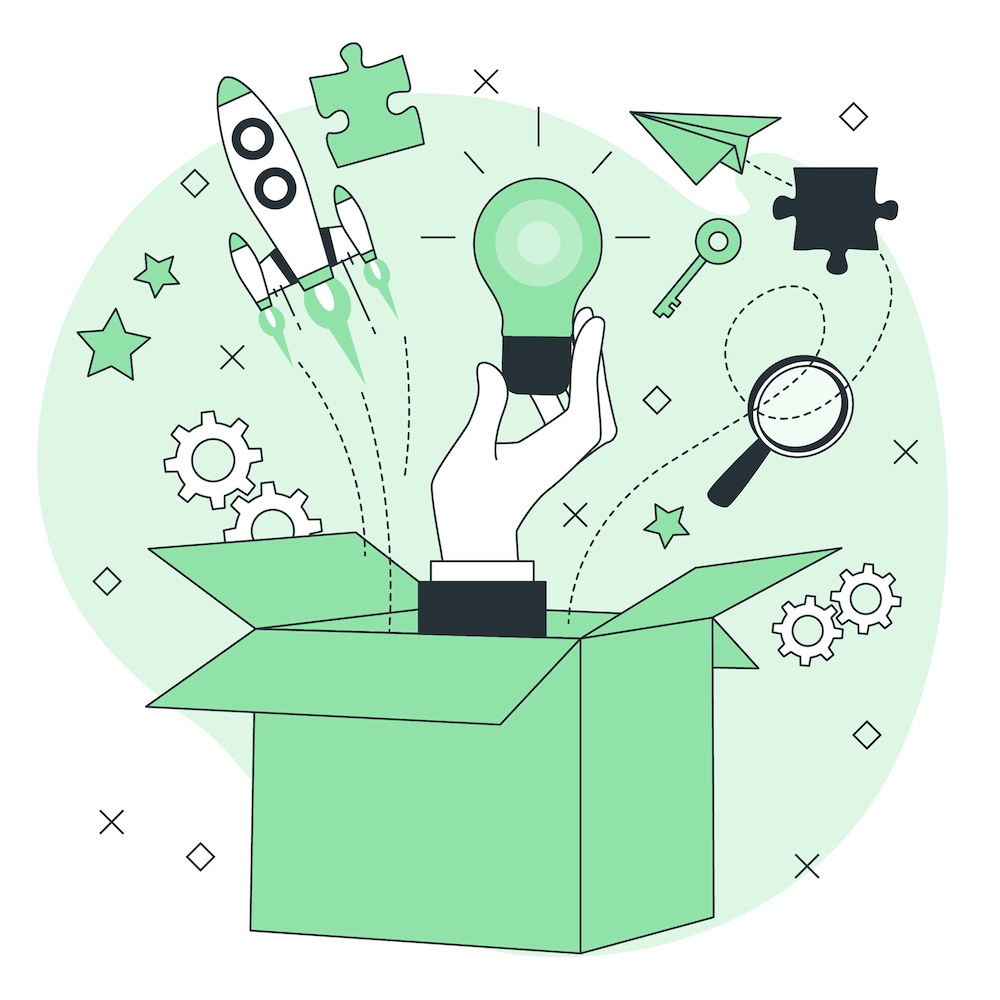Importance of survey distribution in gathering valuable data
Surveys have emerged as an indispensable tool for organizations seeking to gather valuable insights from their stakeholders. However, the success of a survey heavily relies on its ability to reach the right audience at the optimal time. This is where mastering how to distribute a survey becomes paramount. By leveraging the most suitable survey distribution platforms and employing best practices, businesses can maximize their survey's reach, response rates, and, ultimately, the quality of the data collected.
This comprehensive guide delves into the intricacies of online survey distribution, providing you with a strategic framework to ensure your surveys resonate with your target audience effectively. From understanding the fundamentals of survey distribution to exploring various distribution methods, personalization techniques, and strategies to boost response rates, this article equips you with the knowledge and tools to unlock the full potential of your survey initiatives.
Understanding the Fundamentals of Survey Distribution
Effective survey distribution begins with a deep understanding of your target audience. By identifying their preferences, behaviors, and communication habits, you can tailor your distribution strategies to resonate with them more effectively. This foundational knowledge empowers you to select the appropriate distribution channels, craft compelling messaging, and optimize the timing of your survey distribution, which is the best way to survey a group.
Audience Segmentation and Targeting
Segmenting your audience based on demographics, interests, or behaviors allows you to create targeted campaigns that speak directly to their unique needs and preferences. This targeted approach not only increases the likelihood of your survey being noticed but also enhances the relevance of the questions, leading to higher engagement and more accurate responses.
Mobile-Friendly Surveys
In an era where mobile devices dominate internet usage, ensuring your surveys are mobile-friendly is non-negotiable. Optimizing your surveys for seamless mobile experiences, including responsive design and intuitive navigation, can significantly improve completion rates and minimize frustration among respondents.
Concise and Focused Surveys
Attention spans are increasingly limited in today's fast-paced world. To maximize engagement and completion rates, it is crucial to keep your surveys concise and focused. Aim for surveys that can be completed in under two minutes, with a maximum of six questions. This approach not only respects your respondents' time but also increases the likelihood of receiving high-quality, thoughtful responses.
Mastering the Art of Timing and Frequency
Timing and frequency play a pivotal role in the success of your survey distribution efforts. By understanding when and how often to reach out to your audience, you can maximize response rates and minimize survey fatigue.
Optimal Timing
Identifying the optimal timing for survey distribution is essential. Avoid peak vacation periods, holidays, or times when your target audience is likely to be preoccupied with other commitments. Instead, aim for periods when they are more likely to have the availability and willingness to engage with your survey.
Frequency Considerations
While frequent communication can keep your survey top-of-mind, excessive frequency can lead to survey fatigue and lower response rates. Carefully plan the frequency of your survey distribution, taking into account the nature of your research, the preferences of your target audience, and the potential for survey burnout.
Reminders and Follow-ups
Sending friendly survey reminders and follow-ups to non-respondents can significantly boost your response rates. Personalize these messages, emphasize the importance of their participation, and consider offering additional incentives for those who complete the survey within a specified time frame.
Exploring Diverse Survey Distribution Methods
The choice of distribution method plays a pivotal role in the success of your survey initiatives. By understanding the strengths and limitations of each method, you can create a well-rounded distribution strategy that maximizes your reach and resonates with your target audience.
Email Surveys
Email remains a popular and cost-effective distribution method, particularly in corporate settings where email is the primary communication channel. Leverage automation to personalize survey invitations, track open rates, and provide recipients with a seamless experience by embedding the survey within the email body. This approach enhances the effectiveness of email survey distribution.
Social Media Surveys
Social media platforms offer an opportunity to reach a wide and diverse audience. Leverage the power of social sharing, hashtags, and paid promotions to increase visibility and engagement. However, be mindful of the potential for noise and distractions on these platforms, and craft compelling messaging to capture your audience's attention.
Text Message (SMS) Surveys
With their high open rates and immediacy, text message (SMS) surveys are an effective way to reach your audience directly. This method is particularly useful for trigger-based surveys or when targeting audiences who may not have constant access to email or the internet. Utilizing SMS survey distribution can ensure your message gets through promptly.
Website Surveys
Embedding surveys on your website or landing pages can be an intuitive and engaging way to gather feedback from visitors who are already engaged with your brand or content. Leverage website analytics and cookies to gather deeper insights about your respondents, making website survey distribution a strategic choice.
QR Code Surveys
QR codes offer a versatile and convenient way to distribute surveys, both in print and online. This method is particularly useful for in-person events, trade shows, or scenarios where print marketing is prevalent. QR code survey distribution can seamlessly bridge the gap between offline and online engagement.
In-App Surveys
If your organization has a dedicated mobile app, leveraging in-app surveys can be an effective way to gather feedback
from your users in real-time. This method lends itself well to gamification and incentivization strategies, potentially increasing response rates through in-app survey distribution.
Digital Workspace Surveys
For internal surveys targeting employees, leveraging digital workspaces like Slack, Microsoft Teams, or ClickUp can be an efficient distribution method. Many of these platforms offer built-in survey and poll functionality, streamlining the distribution process with digital workspace survey distribution.
Personalizing Survey Invitations for Increased Engagement
Personalization is a powerful tool that can significantly enhance engagement and response rates for your surveys. By tailoring your survey invitations to individual recipients, you create a sense of relevance and connection, increasing the likelihood of their participation through effective survey personalization.
Incorporating Recipient Names and Roles
One of the simplest yet effective personalization techniques is to incorporate the recipient's name and role or job title in the survey invitation. This personal touch immediately establishes a connection and demonstrates that the survey is tailored specifically for them, enhancing the impact of survey personalization.
Dynamic Content and Hidden Fields
Leverage dynamic content and hidden fields to personalize survey invitations further. These techniques allow you to incorporate relevant information, such as demographic data, purchase history, or previous interactions, creating a highly customized experience for each recipient.
Segmentation and Targeted Messaging
Segment your audience based on their characteristics, interests, or behaviors, and craft targeted messaging that resonates with each segment. This targeted approach not only increases the relevance of your survey but also demonstrates your understanding of their unique needs and preferences.
Boosting Survey Response Rates with Incentives and Rewards
Offering incentives and rewards can be an effective strategy to motivate your audience to participate in your surveys. By providing tangible benefits or a sense of exclusivity through survey incentives, you can increase response rates and foster a more engaged community.
Incentive Types
Incentives can take various forms, including gift cards, discounts, exclusive access to valuable resources, or entries into prize draws. Tailor your survey incentives to align with your target audience's interests and preferences, ensuring they are perceived as valuable and desirable.
Gamification and Rewards
Gamification techniques, such as unlocking exclusive content or rewards upon survey completion, can add an element of fun and engagement to the process. This approach is particularly effective when distributing surveys through mobile apps or gamified platforms.
Communication and Transparency
When offering incentives or rewards, it is crucial to communicate the details clearly and transparently. Provide clear instructions on how to claim or redeem the incentive, and ensure that the process is straightforward and user-friendly.
Leveraging Targeted Distribution Methods
While broad distribution methods can increase visibility, targeted approaches can significantly enhance the relevance and effectiveness of your survey distribution efforts. By leveraging targeted distribution methods, you can reach specific segments of your audience with tailored messaging and increased precision.
Customer Relationship Management (CRM) Systems
If your organization utilizes a CRM system, leverage its segmentation capabilities to distribute surveys to specific customer or stakeholder groups. This targeted approach ensures that the right surveys reach the right people, increasing the likelihood of receiving relevant and valuable insights.
Employee Communication Channels
For internal surveys targeting employees, leverage existing communication channels such as intranets, instant
messaging systems, or internal newsletters. This approach not only ensures high visibility but also aligns with your employees' communication preferences and habits, making it ideal for employee engagement surveys, employee satisfaction surveys, and employee opinion surveys.
Professional Networks and Associations
When targeting specific professional communities or industries, leverage professional networks and associations as distribution channels. These networks often have established communication channels and engaged audiences, increasing the likelihood of reaching your desired target segment.
Ensuring Data Privacy and Security
As you collect sensitive information through your surveys, it is crucial to prioritize data privacy and security. Implementing robust measures to protect respondents' confidentiality and comply with relevant data protection regulations is essential for maintaining trust and fostering a safe environment for sharing feedback.
Confidentiality and Anonymity
Clearly communicate your commitment to confidentiality and anonymity to survey respondents. Assure them that their responses will be aggregated and reported in a way that does not reveal individual identities, creating a safe environment for honest and unbiased feedback.
Compliance with Data Protection Regulations
Stay up-to-date with relevant data protection regulations, such as the General Data Protection Regulation (GDPR) or the California Consumer Privacy Act (CCPA). Implement necessary measures to ensure compliance, including obtaining proper consent, securely storing and processing data, and providing individuals with the option to access, correct, or delete their data as required.
Data Encryption and Secure Storage
Employ robust data encryption protocols and secure storage practices to safeguard the data collected through your surveys. Choose survey platforms that prioritize data security, utilizing encryption protocols and secure servers and databases for storing survey responses.
Best Practices for Successful Survey Distribution
To ensure the effectiveness of your survey distribution efforts and maximize response rates, it is essential to follow a set of survey design best practices that have proven to be successful across various industries and audiences.
Clear Communication and Instructions
Provide clear and concise instructions to survey respondents, explaining the purpose of the survey, the importance of their participation, and any specific requirements or formatting guidelines. Tailor your communication to different audience segments, ensuring that the survey's relevance is immediately apparent.
Incentives and Rewards
As discussed earlier, offering survey incentives and rewards can be a powerful motivator for participation. However, it is important to strike a balance and ensure that the incentives do not become the sole focus, potentially compromising the quality and validity of the responses.
Continuous Improvement and Iteration
Treat survey distribution as an iterative process. Continuously analyze and refine your strategies based on the insights gained from each survey. Monitor response rates, engagement metrics, and feedback to identify areas for improvement and implement necessary changes in future surveys, utilizing effective survey tracking methods.
Collaboration and Feedback Loops
Foster a culture of collaboration and open communication within your organization. Encourage stakeholders to provide feedback on the survey distribution process, identifying potential challenges or opportunities for optimization. This collaborative approach can lead to more effective and inclusive survey distribution strategies.
Leveraging Technology for Streamlined Survey Distribution
In today's digital age, leveraging technology can significantly streamline and enhance your survey distribution efforts. From online survey platforms to advanced analytics tools, embracing technological solutions can simplify the distribution process, provide valuable insights, and ultimately improve the quality of your data collection.
Online Survey Platforms
Online survey platforms, such as SurveyOcean, offer user-friendly interfaces for creating, distributing, and analyzing surveys. These platforms often provide features like customizable templates, question branching, response validation, and real-time data collection and analysis, streamlining the entire survey process.
Integration with Existing Systems
Many online survey platforms offer integration capabilities with existing systems and tools, such as CRM platforms, email marketing tools, or project management software. By leveraging these integrations, you can seamlessly distribute surveys within your existing workflows, reducing the need for manual intervention and increasing efficiency through survey automation.
Advanced Analytics and Reporting
Embrace the power of advanced analytics and reporting tools to gain deeper insights into your survey distribution efforts. These tools can provide valuable metrics, such as open rates, click-through rates, and completion rates, allowing you to identify areas for improvement and make data-driven decisions through effective survey data analysis.
Continuous Learning and Adaptation
Mastering survey distribution strategies is an ongoing journey that requires continuous learning and adaptation. As technology evolves and audience preferences shift, it is essential to stay up-to-date with the latest trends, best practices, and emerging distribution methods.
Industry Benchmarks and Trends
Regularly review industry benchmarks and trends related to survey distribution and response rates. This information can provide valuable insights into the effectiveness of various distribution methods and help you identify areas where your organization may be lagging or excelling.
Audience Feedback and Preferences
Actively seek feedback from your audience regarding their preferences for survey distribution methods. Conduct periodic surveys or focus groups to gather insights into their communication habits, pain points, and desired improvements. This invaluable feedback can inform your future distribution strategies and ensure they remain aligned with your audience's evolving needs.
Continuous Experimentation and Optimization
Embrace a culture of continuous experimentation and optimization within your organization. Test different distribution methods, messaging strategies, and incentives to identify the most effective approaches for your specific audience and research objectives. Continuously refine and iterate based on the results, fostering a data-driven and agile approach to survey distribution.
By mastering the art of online survey distribution strategies, you can unlock the true potential of your survey initiatives, gathering high-quality data that drives informed decision-making and fosters a deeper understanding of your stakeholders' needs and preferences. Embrace the power of these strategies, and embark on a journey of continuous improvement, ensuring that your surveys resonate with your audience and deliver meaningful insights that propel your organization's success.
Create Survey Now













